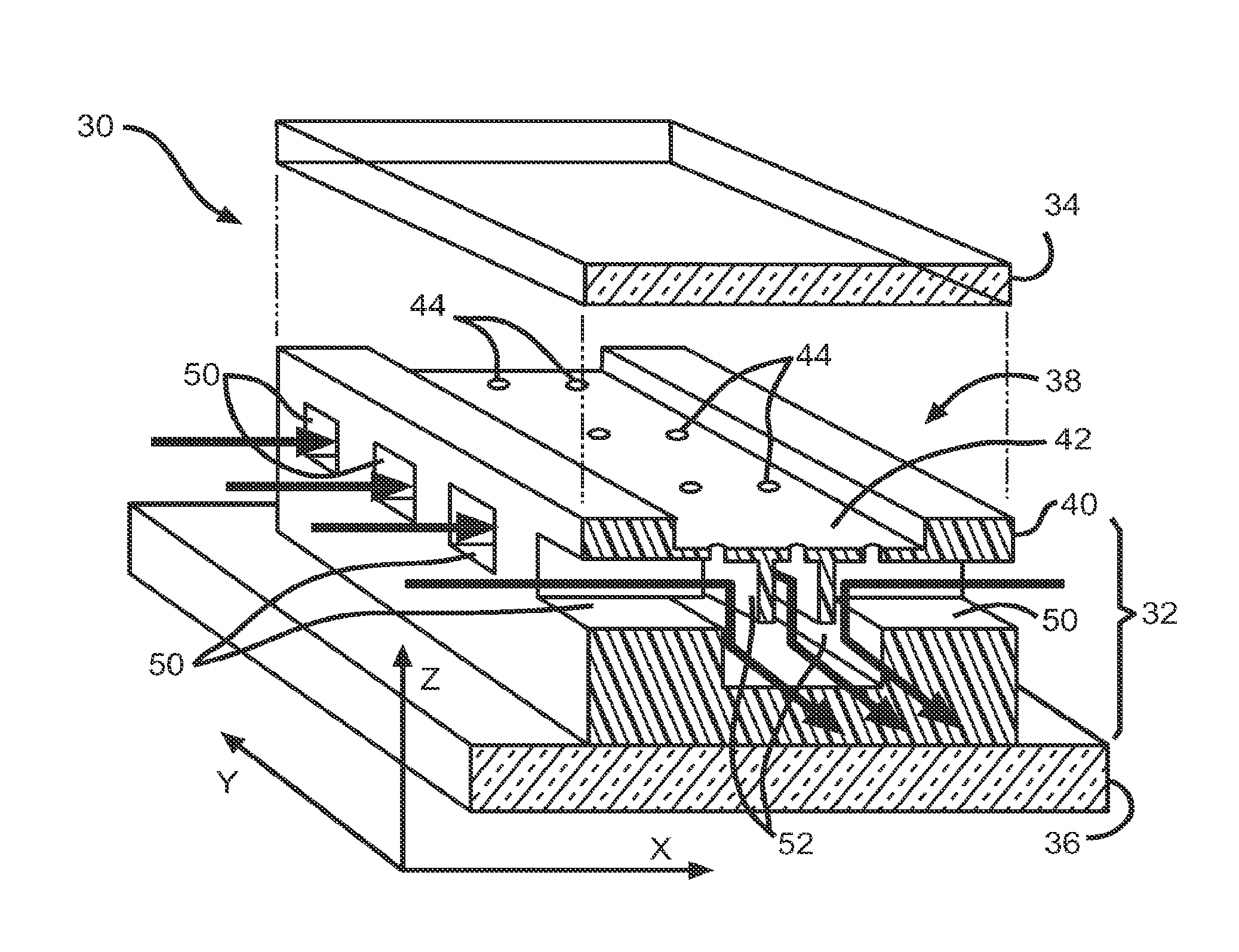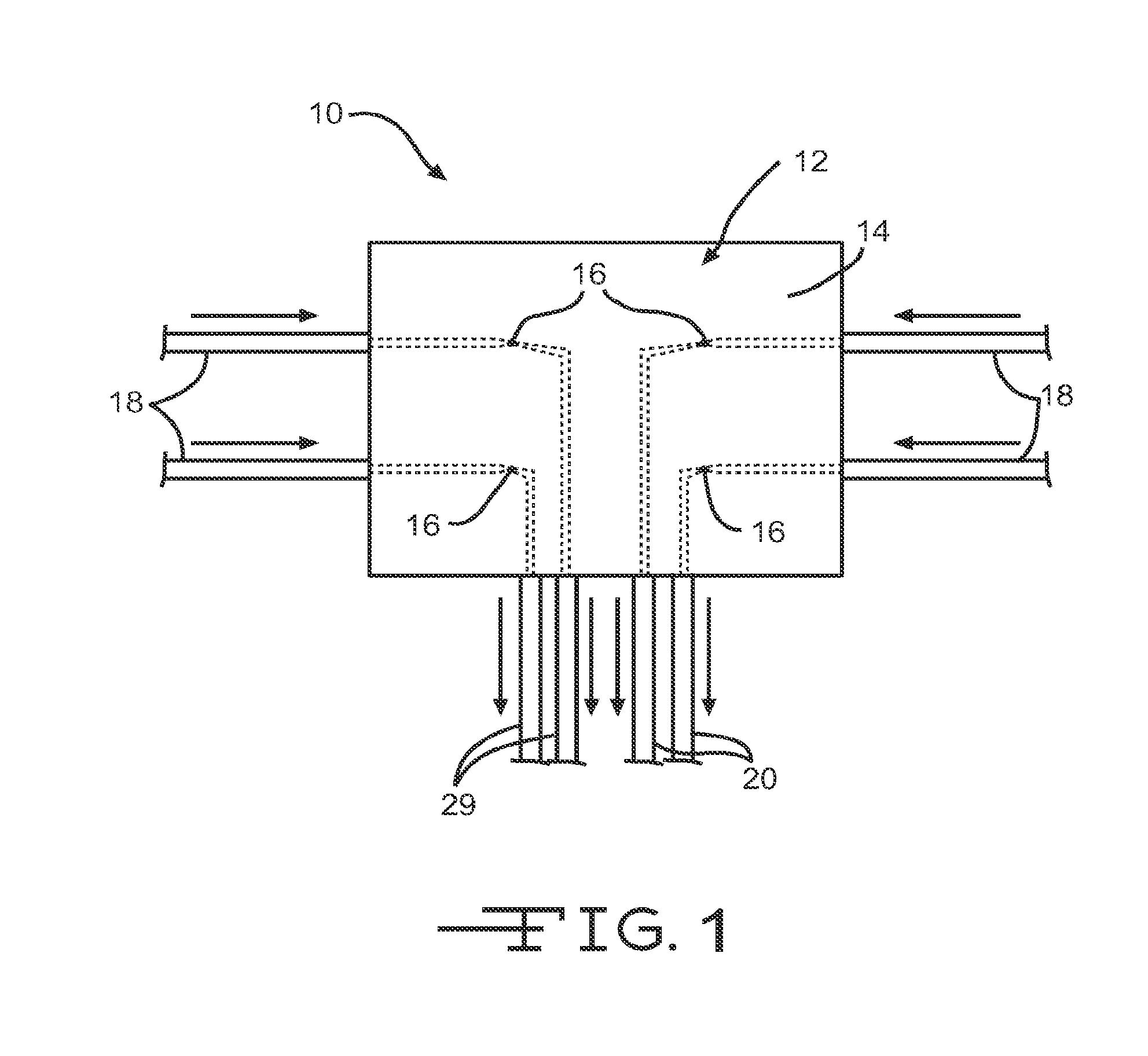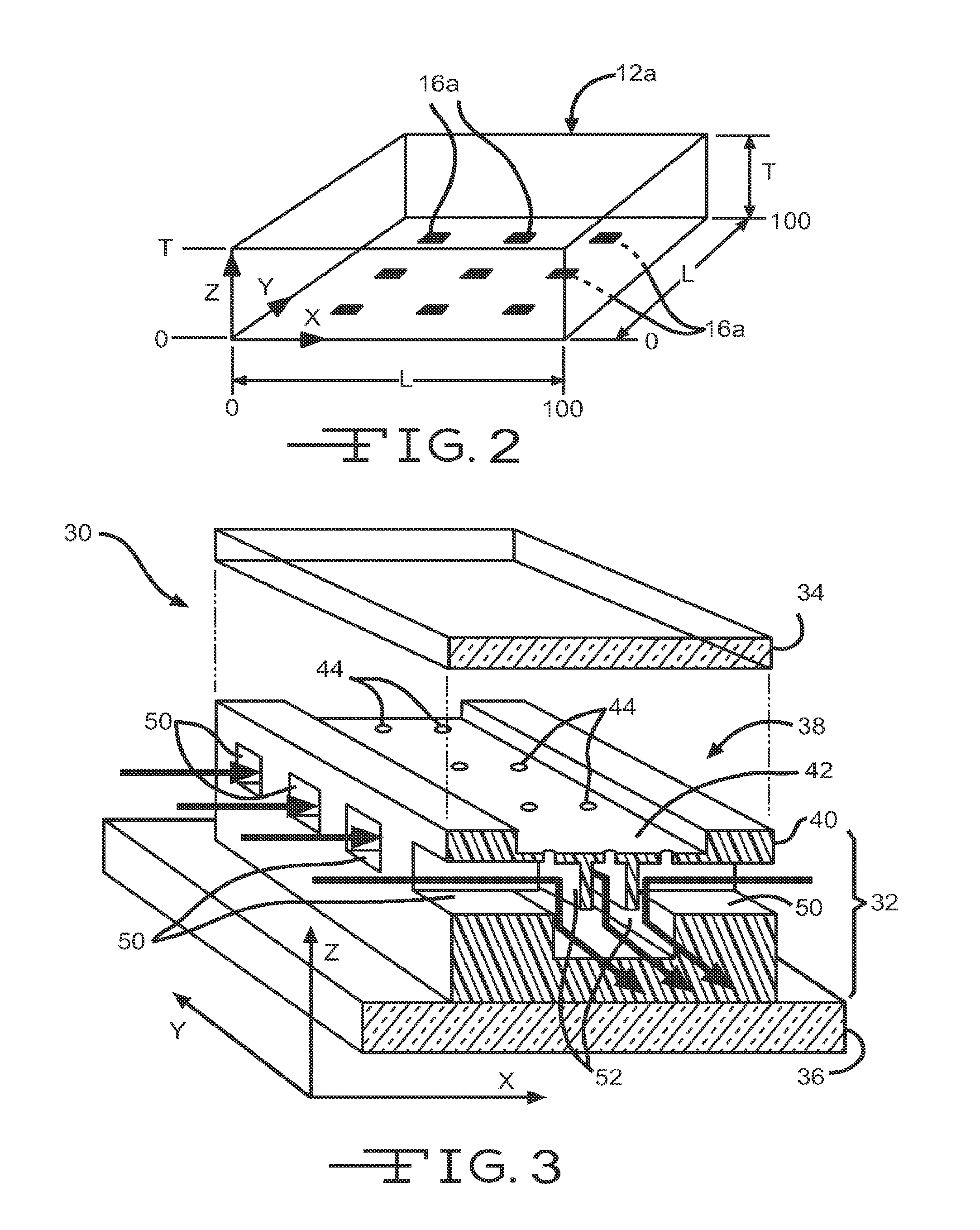Microfluidic device and related methods
a microfluidic device and microfluidic technology, applied in the field of microfluidic devices, can solve the problems of inability to simulate complex, multi-component, and complex cells in vitro, and achieve the effects of increasing cell growth, decreasing cell growth, and increasing cell growth
- Summary
- Abstract
- Description
- Claims
- Application Information
AI Technical Summary
Benefits of technology
Problems solved by technology
Method used
Image
Examples
example 1
Microfluidic Device Materials and Methods Used
[0221]A. Optical Measurements
[0222]Optical measurements were performed using a Zeiss Axioplan 2 reflection microscope with fluorescence capabilities. Optical visualization of the diffusion profiles were demonstrated using simple organic dyes mixed with water to an appropriate absorbance and used directly. Fluorescence measurements were performed using fluorescein conjugated Bovine Serum Albumin, (BSA) from Molecular Probes with 6.2 fluoresceins per BSA molecule. The BSA was dissolved in phosphate buffered saline (PBS) to a concentration of 0.4 mg / ml and introduced directly in the fluidic microchannels. Agarose (Bacto-Agar, Difco Labs, 0.5% to 1% in DI water) or Matrigel (BD Bioscience, Reduced Growth Factor, LDEV-free) was used as the growth / diffusion medium for the microsystem and test devices.
[0223]B. Computer Simulations
[0224]Concentration profiles were calculated by finite element volume analysis on an L×L×T (x,y,z) rectangular latti...
example 2
Microfluidic Device Results
[0231]A. Computer Simulations
[0232]Diffusion is the driving force behind the formation of concentration profiles, and the fundamental equations driving diffusion are Fick's first and second laws.
Ji=-Di∇CiEq1∂Ci(x,y,z,t)∂t=-Di∇2Ci(x,y,z,t)Eq2
[0233]Where Ji is the flux and Di is the diffusion coefficient or diffusivity of species i, Ci(x,y,z,t) is the concentration of i at point (x,y,z,t) and ∇□ is the del operator (Bard, 2001). A finite element simulation, FIG. 5, for a 5×5 array of diffusion ports spaced 25 lattice units apart, Δl=25, was performed with the center diffusion port as a single concentration source with a normalized concentration of 100, Ci(50,50,0,t)=100, and the remaining diffusion ports held at zero. FIG. 5 shows the resulting, steady-state, 2D concentration profile on the xy plane at z=0, i.e. the concentration profile at (x,y,0,t=∞). The source diffusion port is clearly seen as the peak at the center of the field, while the sink diffusion...
example 3
Microfluidic Device Experimental Verification
[0239]To experimentally validate the results of the diffusion simulations and demonstrate the power and versatility of the diffusion microsystem to control both temporal and spatial diffusion profiles, the device shown in FIG. 4(b) was characterized experimentally by addressing each microfluidic channel with a differently colored organic dye. There are eight, 20 μm×20 μm diffusion ports 104 spaced equally along the length of each microchannel, although for ease of illustration only 4 are shown in FIG. 4(b). The separation between microchannels is approximately 1 mm. FIG. 9(a) shows the microdevice 100 with a different color dye loaded in each microchannel 102a, 102b, 102c and 102d at the beginning of the experiment before diffusion profiles have become established, i.e. t=0. Channel 102a was filled with blue die, channel 102b was filled with green die, channel 102c was filled with orange die, and channel 102d was filled with red die. FIG....
PUM
| Property | Measurement | Unit |
|---|---|---|
| flow rate | aaaaa | aaaaa |
| volumes | aaaaa | aaaaa |
| volumes | aaaaa | aaaaa |
Abstract
Description
Claims
Application Information
 Login to View More
Login to View More - R&D
- Intellectual Property
- Life Sciences
- Materials
- Tech Scout
- Unparalleled Data Quality
- Higher Quality Content
- 60% Fewer Hallucinations
Browse by: Latest US Patents, China's latest patents, Technical Efficacy Thesaurus, Application Domain, Technology Topic, Popular Technical Reports.
© 2025 PatSnap. All rights reserved.Legal|Privacy policy|Modern Slavery Act Transparency Statement|Sitemap|About US| Contact US: help@patsnap.com



